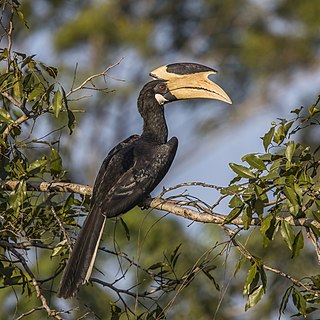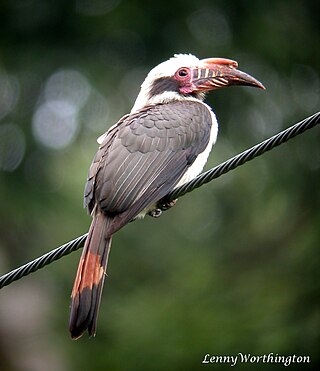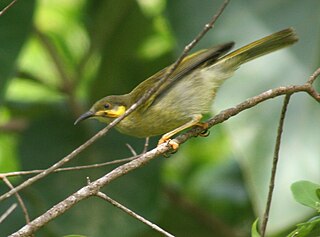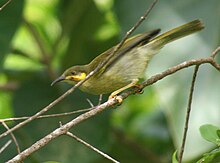
Louis Pierre Vieillot was a French ornithologist.

The Malabar pied hornbill, also known as lesser pied hornbill, is a bird in the hornbill family, a family of tropical near-passerine birds found in the Old World.

The agami heron is a medium-sized heron. It is a resident breeding bird from Central America south to Peru and Brazil. It is sometimes known as the chestnut-bellied heron, and is the only member of the genus Agamia. In Brazil it is sometimes called Soco beija-flor, meaning 'hummingbird heron', thanks to its unique coloration pattern.

Anthochaera is a genus of birds in the honeyeater family. The species are endemic to Australia and include the little wattlebird, the red wattlebird, the western wattlebird, and the yellow wattlebird. A molecular phylogenetic study has shown that the regent honeyeater also belongs in this genus.

Grus is a genus of large birds in the crane family.

The friarbirds, also called leatherheads, are a groups of 18 relatively large honeyeaters in the genus Philemon. Additionally, the single member of the genus Melitograis is called the white-streaked friarbird. Friarbirds are found in Australia, Papua New Guinea, eastern Indonesia, and New Caledonia. They eat nectar, insects and other invertebrates, flowers, fruit, and seeds.

The grass-green tanager is a small South America bird in the tanager family Thraupidae. It is the only member of the genus Chlorornis.

Piranga is a genus of birds long placed in the tanager family, but now considered members of the family Cardinalidae. The genus name Piranga is from Tupi word tijepiranga, the name for an unknown small bird.

The Madagascar ibis, also known as the Madagascar crested ibis, white-winged ibis or crested wood ibis, is a medium-sized, brown-plumaged ibis. It has bare red orbital skin, yellow bill, red legs, white wings and its head is partially bare with a dense crest of green or gloss blue and white plumes on the nape. The Madagascar ibis is the only member of the genus Lophotibis.

Anisognathus is a genus of boldly colored tanagers found in the highland forests and woodlands of South America.

The Luzon hornbill, sometimes called Luzon tarictic hornbill, is a species of hornbill in the family Bucerotidae. It is endemic to forests on Luzon and nearby islands in the northern Philippines. As is the case with all Philippine tarictic hornbills, it has been considered a subspecies of P. panini.

The typical spinetails, Cranioleuca, are a genus of Neotropical birds in the ovenbird family Furnariidae.

The Polynesian wattled honeyeater or the eastern wattled honeyeater, is a species of bird in the honeyeater family Meliphagidae. It was considered conspecific with the Fiji wattled honeyeater and the kikau.

The yellow cardinal is a species of South American bird in the tanager family Thraupidae. It is the only member of its genus, Gubernatrix. It is very rare and can only be found in South America.

Vireo is a genus of small passerine birds restricted to the New World. Vireos typically have dull greenish plumage, but some are brown or gray on the back and some have bright yellow underparts. They resemble wood warblers apart from their slightly larger size and heavier bills, which in most species have a very small hook at the tip. The legs are stout.

Stomiopera is a genus of honeyeaters endemic to Australia. It contains former members of Lichenostomus, and was created after a molecular phylogenetic analysis published in 2011 showed that the original genus was polyphyletic.

The broad-billed roller is a member of the roller family of birds which breeds across tropical Africa and Madagascar in all but the driest regions. It is a wet season breeder, which migrates from the northern and southern areas of its range towards the moister equatorial belt in the dry season.

Ortygornis is a genus of birds in the francolin group of the family Phasianidae.





















